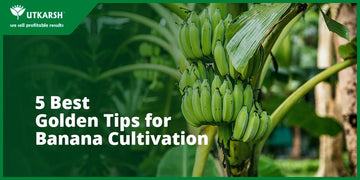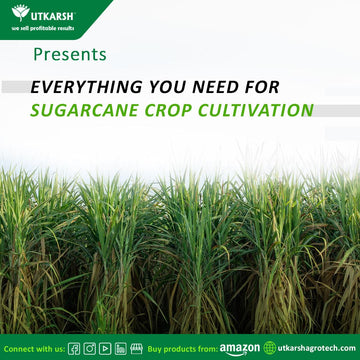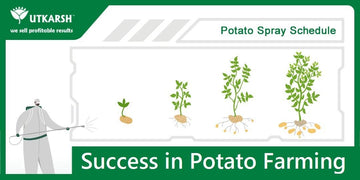
Banana Cultivation
Banana cultivation is one of the most important harvest during the year. It is seen that banana contributes to around 37% of the total fruit production in India. And like every other plant it has its own requirement and pace of growing and nurturing.
Fun fact – banana is grown in different months, in different states of India.
When to cultivate plays a major role, but how to cultivate is the most important factor. However, there are many key components to be considered before cultivating bananas as it is observed that following a proper technique and schedule can improve the cultivation and they are as follows:
BASIC REQUIREMENTS for BANANA CULTIVATION
1. CLIMATE and SOIL REQUIREMENTS
Banana being a low maintenance plant, can grow in the poorest soil as well as the richest type of soil. However, talking about the requirements banana needs rich loamy, well drained soil with a pH of 5.8 – 7.5.
It is suggested that the soil chosen for banana cultivation, should not be too acidic or too alkaline. It must be organically strong with high nitrogen content, a good amount of phosphorus level and plenty of potash.
Along with these, banana requires adequate heat and thus, have a low rate of production during winter seasons. A strong- 12 hours of sunlight is highly recommended as shade or overcasting reduces growth cycle by 3 months and bunch size by 30%. It is also advisable to grow bananas in a temperature of 25°C – 30°C with an annual rainfall of 100mm per month.
2. SOWING METHODS
The sowing requires a properly managed pit of 1x1x1 feet. Before sowing the seed, provide it with a round of basal fertilizer (compost 500gm + DAP 100gm + VAM 3gm) and 1 litre of water immediately after sowing. It is advisable to provide fertiliser only after three months or when the leaves of two plants start colliding with each other. Although, try to keep a distance of 7ft between them.


Having said that, it doesn’t end at sowing. There are post-sowing actions to be taken as well, which includes drenching for root formation and fungus prevention. Once the plantation is done, fertilizers are to be given after every seven days by drenching as gene-expression of a plant starts which makes its growth unstoppable.
After around sixty days, you must stop the drip for at least 10-15 days so that the roots will start making a way downwards.
3. WATER MANAGEMENT
Water is the main element of cultivating and growing plants. In banana plants as well, regular watering is necessary in order to exceed the water evaporation rate. Even if the rainfall is lesser than the evaporation rate, make your irrigation system stronger so that it suffices the water needs. Water management is important for banana cultivation.
The ideal pH of water is 6.5-7.5 and a total of 900-1200mm of it is required in the whole course of cultivation. This can be fulfilled by irrigation or by rainfall. Therefore, the field is to be irrigated every 3-4 days in hot season and 7-8 days during cooler environment. The irrigation can also be managed as follows:

4. NUTRIENT
Crop growth majorly depends on the nutrients provided. Even in this banana cultivation, banana plants need fertile soil and an abundance of soil moisture for better growth cycle, and production of flower and fruits.
The utmost care is required during the early stage of plant growth as the development of the plant during that time actually impacts the bunch size. Therefore, soluble potassium, phosphorus, and nitrogen fertilizers should be made available to the roots right after the plantation process is completed.


Timing and frequency are as important as applying fertilizers is. Talking about timing, it should be planned well in advance such that it coincides with the climate condition. Frequency can be determined by other factors – the frequency must be more often when the soil is light and lack fertility and also when there are chances of high rainfall.
Different fertilisers carry different frequency too. For example- P fertilizers should be applied once or twice annually in the subtropics as it has limited mobility in the soil whereas N and K fertilizers are normally applied at short intervals via the irrigation system.
We’ve seen that banana requires good amount of sunlight but not heavy showers along with humidity. Excessive humidity causes intensive leaching which asks for immediate fertilisation through soil application itself in order to compensate for the loss caused due to leaching.
5. WEED CONTROL
For the first 120 days, inter cultivation or tilling can be used to minimise the weed growth. However, once the plants have reached a certain level of growth maturity, the weeds will start dying on their own and even if this does not happen, you can use herbicides for the same.
To Know More about Banana cultivation Guide For Uncertain Climatic Conditions:
FOLIAR FEEDING
The roots of the plants readily absorb most of the mineral nutrients but other parts of the plants fail to do so and are able to absorb it in their ionic form only. This is where foliar feeding comes in. It makes the extensive area of plant leaves from a natural candidate to a complimentary feeding channel.

This method has its own set of pros and they are:
- It provides required nutrients even to those parts of the plant that are immovable and fixed.
- It helps in a quick correction when deficiencies are detected at advanced stages of a plant growth.
- It enhances the plant when the root activity is hampered by external stresses such as low soil temperature, poor aeration, nematodes, rodents, or damage by machinery.
- If the competition increases between the weeds and the actual plants, this method helps in ensuring high availability of soil application to the targeted organs.
- During critical growth stages, the root may fail to provide the plant with certain nutrients in adequate amount. This is when the foliar feeding method plays a major role.
DIFFERENT ACTIONS IN DIFFERENT SCENARIOS
The banana yield, requires different type of attention in different scenarios and seasons and that are as follows.
Monsoon
During monsoon, there are certain precautions to be followed such as avoiding logging conditions. It is a peak time and hence every farmer is suggested to keep a track of the climate conditions so that we can draw a rough idea of when to spray fertilizers. Weeds tend to grow more in monsoon and thus it becomes necessary to regularly manage and remove the weeds. Algae must be removed from time to time as well. The heavy rains can be as disastrous as required as the pleasant rains are and on this note it is advisable to use ammonium sulphate instead of urea fertilizer.
Once the rains stop, full drip process must begin immediately in order to avoid shocks. Provide the roots with granulated fertilizers (9-12 inches away from the stem).

As the monsoon starts to fade and before the onset of winters, is the most crucial stage of cultivation. You can see the best of results if the temperature continues to stay between 25°C-30°C. It is the time where you can provide the maximum amount of fertilizer for better growth. Earthing can also be undertaken at this stage.
Winter
The growth of the plant slows down on the onset of the winter season. At this stage, the fertilizers can be given but only by spraying and if that is feasible. Ammonium sulphate, potassium nitrate, calcium nitrate should be used for nitrogen requirement as well.
If the temperatures go below 12°C, the plants may start choking. In this case the plants can be provided with humic acid, boron and sulphur.



Summer
As the summer begins, the growth of plants that was reduced during winters will start to have a boom phase. It is highly recommended to nurture the plants with urea as nitrogen fertilizers in this stage of time. The scorching heat can create cracks in the soil but it can be healed with loose water. The banana leaves can be covered with banana hands to avoid sun burning.
There may be cases of breaking of stem or banana bunch as well but you can provide calcium nitrate as a treatment for the same. If the plant height has grown to 5-7 feet, a ratoon crop can be kept in there.
Fruit stage
This is one of the crucial stages of a plant growth. When the flower is removed from the plant, imidachlorpid is provided in the stem. In the banana cultivation, make sure that the black dried part at the bottom of the banana is removed during the fruiting stage and a plastic bag is to be tied at the stalk.
PROPER SCHEDULE
It is believed that following a proper schedule boasts the banana cultivation of a plant. Thus, Utkarsh provides a proper schedule which can be followed and guarantees a rise in the quality and quantity of the banana cultivation:


THE BOTTOM LINE
Whatever you do to sow the plants, utmost care and attention will always be required. Banana comes from a group of plants that are majorly accepted and cultivated. Speaking of which, they possess a set of requirements and the banana cultivation is guaranteed to be successful if you fulfil them.
To know more about profitable Banana cultivation , Watch our webinar recording of Profitable Banana Farming:
Utkarsh Argo not only provides you with the knowledge of those requirements but also provides you with a variety of products that you can use on the go. Apart from these products we have an exclusive kit for the development of a banana bunch.
Simply order the number of 1-Acre-Kits as per the size of your farm and get the entire range of requirements covered in it.
Simply select the kit, that’s it. => Lesser Cost & Higher Profitability.
For Successful banana farming you can shop our Utkarsh Kit for Banana Cultivation.
To shop a Banana Farming kit Click on this : https://utkarshagro.com/product-category/kits/




Following the above Fertigation and Spray schedule will definitely help you increase the Banana Cultivation Production by great quantity.
Tissue culture Banana/टिशू कल्चर केला

Certified by NCs-TCP
Developed by the latest technology
GRAND NAINE G-9
– 100% variety guarantee
– parallel growth
– Lengthier banana
– Virus-free plants
– Fastest Growing plants
– Available in bags and tray
To know more about Tissue culture Banana/टिशू कल्चर केला, you can chat on : wa.me/918866543678
May you have the best yield ever! Feel free to contact Utkarsh for any doubts and advice.
If you have any further queries, feel free to reach out to us on 919824133044, +919924864422, +919824300544
Landline: 02621-255972
Visit our website: https://utkarshagro.com/
Email ID: rd@utkarshagro.com
Stay connected with us to learn more tips and tricks. All you have to do is follow us here:
Chat: wa.me/918866543678
Facebook: https://www.facebook.com/utkarshagrochem/
Instagram: https://www.instagram.com/utkarshagrochem/
Twitter: https://twitter.com/UAgrochem
LinkedIn: https://www.linkedin.com/company/utkarsh-agrochem-pvt-ltd/
YouTube: https://www.youtube.com/utkarshagrochem
You can also shop from
Amazon: https://bit.ly/UtkarshAmazon
AgriBegri: https://agribegri.com/sellers/utkarsh_agro.php
Bighaat: https://www.bighaat.com/collections/utkarsh-agro
Once again, all the products mentioned in this blog can be found on Amazon as well as the website of Utkarsh. Also, the method of application and the required dose can be easily found on our Website – Utkarshagro.com/shop.
Written by:
Beepasha Madhvani
Affiliate Writer with Monkey Ads




